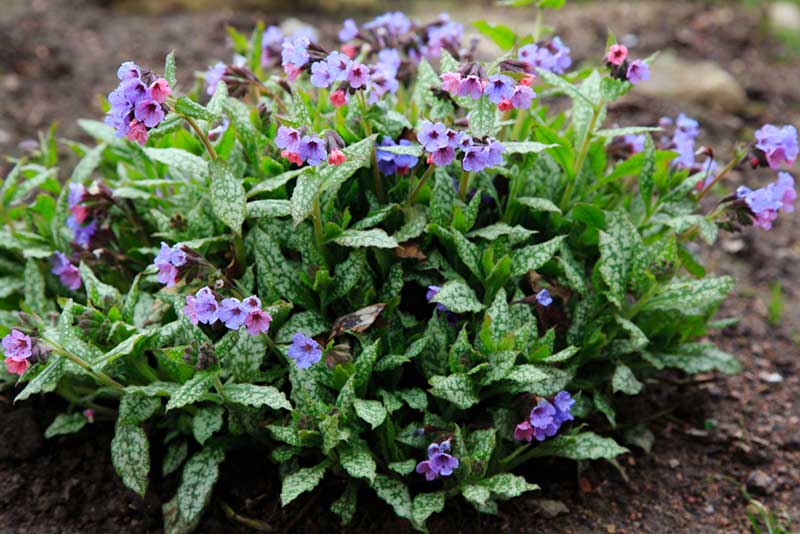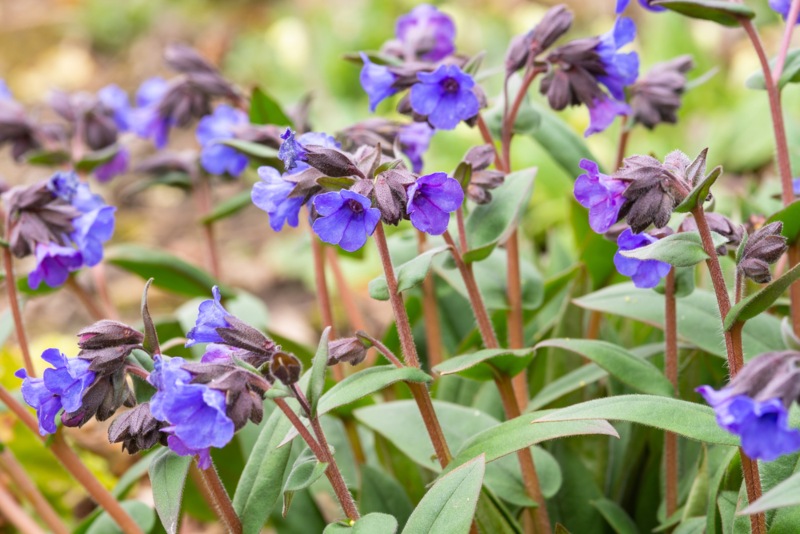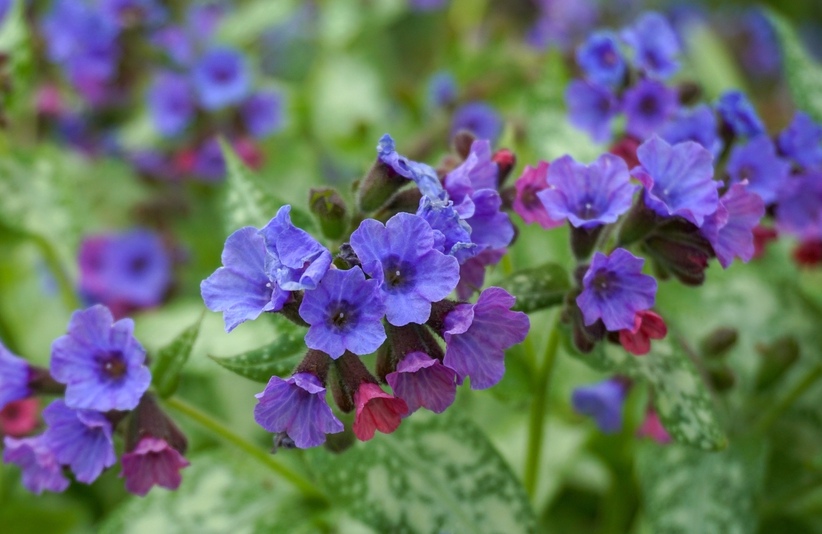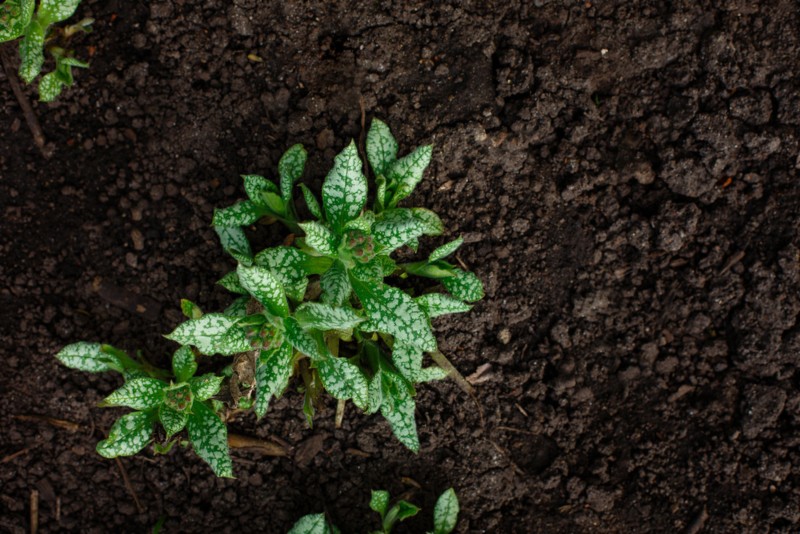
Lungwort is a flowering plant that is also known as plumonaria. It received its name from herbalists centuries ago who associated the plant with lung health and thought the plant resembled the shape of a lung.
While Lungwort cannot actually be used to treat any lung problems or disorders, it is still commonly planted by gardeners and enthusiasts.
To learn more about growing and caring for healthy and robust Lungwort plants, continue reading below.
| Botanical Name: | Lungwort (pulmonaria officinalis) |
| Common Name(s): | Lungwort, Pulmonaria |
| Plant Type: | Herbaceous perennial |
| Mature Size: | 8 to 12 inches tall, 1 to 2 feet wide |
| Sun Exposure: | Partial sun to full shade |
| Water Needs: | Every 7 to 10 days |
| Soil Type: | Organic humus-heavy soil |
| Soil pH: | Slightly acidic to neutral pH |
| Bloom Time: | Starting mid Spring and lasting through mid Fall |
| Maintenance: | Low |
| Flower Color: | Multi-color |
| Hardiness Zones: | 3-8 (USDA), hardy |
| Toxicity: | Somewhat toxic, should not be ingested |
Lungwort Care
Lungwort plants are simple to care for because they essentially enjoy being ignored. They do not need to be pruned, fertilized, or even watered often and can thrive in moist, cool, and shady weather.
Unlike most plants, Lungwort is considered hardy because they can live in slightly acidic, neutral, and somewhat essential soil and are virtually immune to many diseases that they can spread from flower to flower.
While not necessary, you can opt to trim back dimming and fading Lungwort leaves by clipping them at the stems. This clipping will encourage your Lungwort to grow bushier if that is the plant look that you desire.

Light
Lungwort plants love to grow in either partial sun or full shade. Intolerant of direct bright light, Lungwort thrives in the early Spring when the light often appears dappled through trees and other blooming foliage. When grown inside, Lungwort should be kept across from a window where the light enters the room but does not shine directly on the plant.
Water
When you are first planting your Lungwort, it needs some more water than usual. Consider watering it every few days unless the leaves begin to droop. If you notice drooping leaves, stop watering. When the plant has rooted and acclimated to its space, you should only water your Lungwort occasionally, particularly during droughts or hot summer.

Temperature and Humidity
The best temperature for Lungwort plants is a mild Spring temperature. Therefore, they thrive in areas where the temperature does not typically exceed 75 degrees Fahrenheit during the summer.
When it comes to humidity, Lungwort likes humid climates. Though summer might make Lungwort wilt a little bit, they thrive on summertime humidity and will become upright again when the temperature drops.
Soil
When growing Lungwort, the type of soil that you should use is organic and humus-rich soil. The best kind of soil for Lungwort is one with good drainage, soft texture, and does not trap air bubbles easily. Preferable, Lungwort should be planted in acidic to neutral pH soil to grow to its full height. If neutral soil is not available, slightly alkaline soil can keep Lungwort alive.
Fertilizer
Lungwort plants require little to no fertilizer to thrive. During the start of Spring, the best fertilizer to use is an all-purpose garden flower fertilizer in small quantities. As late Spring and early Summer arrive, you can use more fertilizer. You can improve your Lungwort fertilizer by adding compost to the soil and all-purpose mix to encourage brighter bloom and flower color.
Is Lungwort Toxic?
According to the USDA toxicity classification of 2021, Lungwort is considered toxic to people and animals. While most animals do not usually attempt to eat it, it is crucial to keep it out of reach from animals, pets, and children since it is poisonous when ingested. Therefore, it is best to keep Lungwort outside in a gated area if you have kids or pets in the home.
Potting and Repotting Lungwort

To pot or repot your Lungwort, dig up the roots from your plant’s current pot or spot in the ground and simply repot them in a regular indoor terra cotta or ceramic pot. Plant the clumps of root closely together and make sure that the pot is large enough for the roots to spread out over time—water after repotting and wait to water again until the soil is completely dry.
Propagating Lungwort
If attempting to propagate Lungwort, is it imperative to remember that Lungwort is not usually started from seed. Lungwort is often easily propagated from the plant and its roots after division. To successfully propagate Lungwort, try the following:
- Wait until your established Lungwort has finished its flowering process.
- Dig up your Lungwort plant at the roots, do not clip them.
- Gently separate your Lungwort roots into strands.
- Replant the clumps in a slightly shady spot in your yard.




